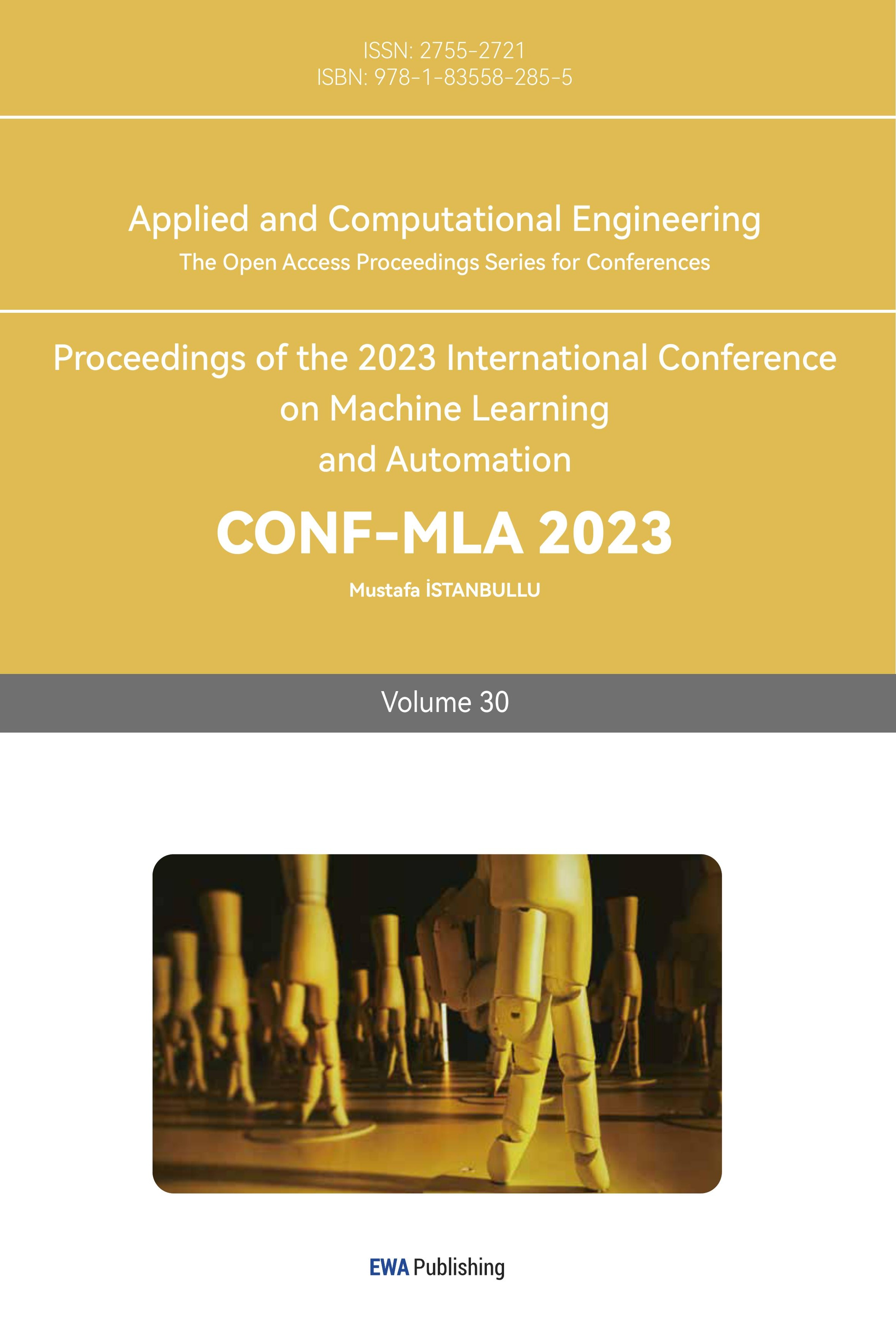References
[1]. Xu, W. (2010, August 30). Virtual reality technology research status and development at home and abroad. https://www.syue.com/Paper/Computer/Network/248417.html.
[2]. Anhui University of Technology. (2011, May 11). Virtual reality technology application research graduation thesis. https://www.docin.com/p-201160206.html&isPay=1.
[3]. Industry Outlook. (2022, June 17). Analysis of the global VR headset industry market size, shipment volume and enterprise competition pattern in 2021. https://www.163.com/dy/article/HA2VVUIG055360U6.html.
[4]. jngyjg. (2022, November 22). How much does a VR device cost (how much does a set of VR devices cost and what are all the VR devices)? https://www.jngyjg.com/post/89114.html.
[5]. AG. (2022, May 30). What is VR game? What are the types of VR game devices? https://www.sgpjbg.com/info/34433.html.
[6]. Zhang, Y., & Yu, X. (2020). Analysis of existing VR technology and its future development trends. Industry and Technology Forum, 19(07), 63-64.
[7]. Hou, C. (2016). Analysis of the development of virtual reality industry in 2015. Internet World, 4, 51-54
[8]. Liu, X., Liu, Y., & Meng, S. (2019). Research on the development and future trends of China’s VR industry in 2019: A qualitative study based on in-depth interviews with 11 experts from industry and academia. China Media Science and Technology, 5, 35-38.
[9]. Vergara, D. (2021). Development of Virtual Reality Automotive Lab for Training in Engineering Students. Sustainability 13, no. 17: 9776.
[10]. He, X. (2023). On the application of VR virtual reality technology in teaching of network and new media majors. Journal of Liaoning Normal University (Social Science Edition), 1, 65-67.
Cite this article
Long,Z. (2024). Research on the current situation and development prospects of VR games. Applied and Computational Engineering,30,255-260.
Data availability
The datasets used and/or analyzed during the current study will be available from the authors upon reasonable request.
Disclaimer/Publisher's Note
The statements, opinions and data contained in all publications are solely those of the individual author(s) and contributor(s) and not of EWA Publishing and/or the editor(s). EWA Publishing and/or the editor(s) disclaim responsibility for any injury to people or property resulting from any ideas, methods, instructions or products referred to in the content.
About volume
Volume title: Proceedings of the 2023 International Conference on Machine Learning and Automation
© 2024 by the author(s). Licensee EWA Publishing, Oxford, UK. This article is an open access article distributed under the terms and
conditions of the Creative Commons Attribution (CC BY) license. Authors who
publish this series agree to the following terms:
1. Authors retain copyright and grant the series right of first publication with the work simultaneously licensed under a Creative Commons
Attribution License that allows others to share the work with an acknowledgment of the work's authorship and initial publication in this
series.
2. Authors are able to enter into separate, additional contractual arrangements for the non-exclusive distribution of the series's published
version of the work (e.g., post it to an institutional repository or publish it in a book), with an acknowledgment of its initial
publication in this series.
3. Authors are permitted and encouraged to post their work online (e.g., in institutional repositories or on their website) prior to and
during the submission process, as it can lead to productive exchanges, as well as earlier and greater citation of published work (See
Open access policy for details).
References
[1]. Xu, W. (2010, August 30). Virtual reality technology research status and development at home and abroad. https://www.syue.com/Paper/Computer/Network/248417.html.
[2]. Anhui University of Technology. (2011, May 11). Virtual reality technology application research graduation thesis. https://www.docin.com/p-201160206.html&isPay=1.
[3]. Industry Outlook. (2022, June 17). Analysis of the global VR headset industry market size, shipment volume and enterprise competition pattern in 2021. https://www.163.com/dy/article/HA2VVUIG055360U6.html.
[4]. jngyjg. (2022, November 22). How much does a VR device cost (how much does a set of VR devices cost and what are all the VR devices)? https://www.jngyjg.com/post/89114.html.
[5]. AG. (2022, May 30). What is VR game? What are the types of VR game devices? https://www.sgpjbg.com/info/34433.html.
[6]. Zhang, Y., & Yu, X. (2020). Analysis of existing VR technology and its future development trends. Industry and Technology Forum, 19(07), 63-64.
[7]. Hou, C. (2016). Analysis of the development of virtual reality industry in 2015. Internet World, 4, 51-54
[8]. Liu, X., Liu, Y., & Meng, S. (2019). Research on the development and future trends of China’s VR industry in 2019: A qualitative study based on in-depth interviews with 11 experts from industry and academia. China Media Science and Technology, 5, 35-38.
[9]. Vergara, D. (2021). Development of Virtual Reality Automotive Lab for Training in Engineering Students. Sustainability 13, no. 17: 9776.
[10]. He, X. (2023). On the application of VR virtual reality technology in teaching of network and new media majors. Journal of Liaoning Normal University (Social Science Edition), 1, 65-67.









